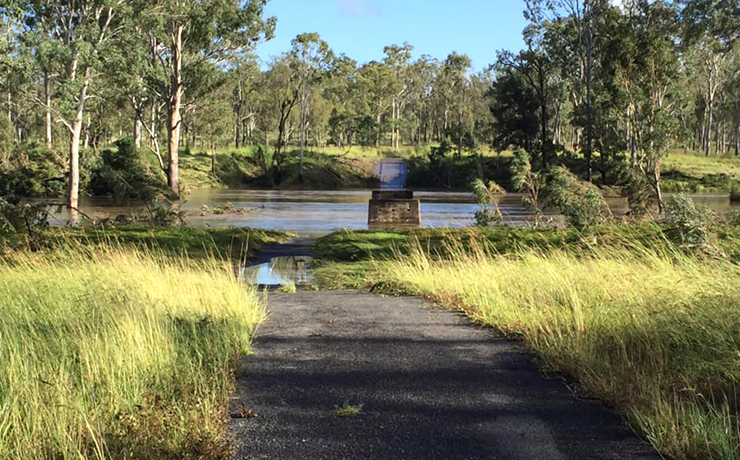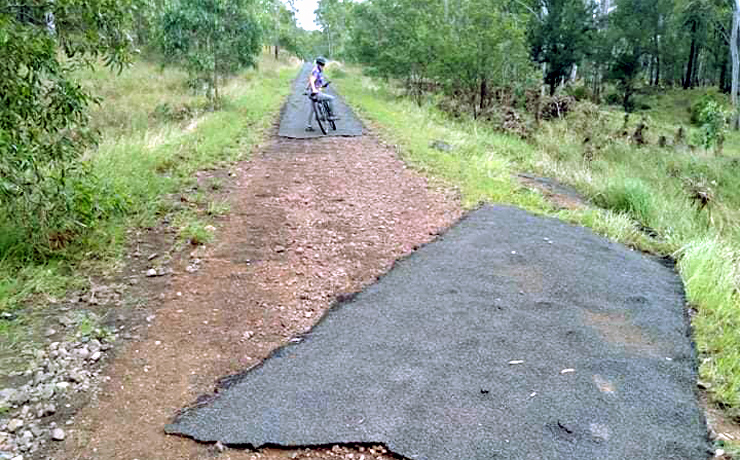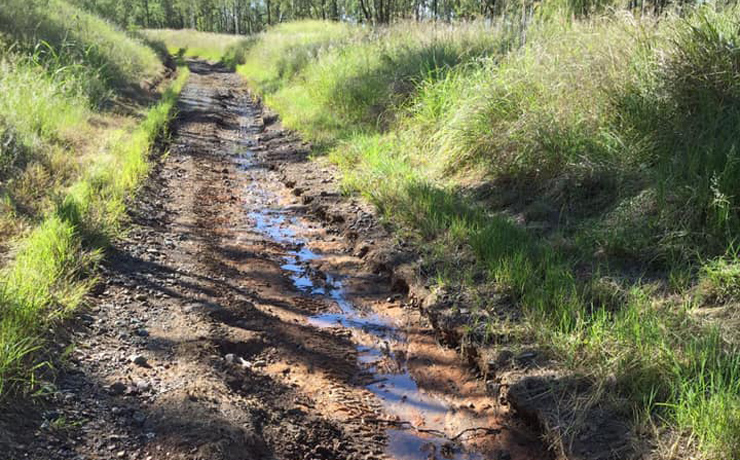
January 24, 2022
Heavy rain in late November and the deluge on January 8-9 have left the South Burnett Regional Council with an estimated $91,000 bill to repair the South Burnett Rail Trail.
In a report due to be debated on Tuesday, Councillors will be told summer storms caused extensive damage to almost 5km of the trail.
This has forced the closure of the section between Wondai and the Gympie Regional Council border to preserve public safety.
Two other sections – between Burns and Transmitter roads at Tingoora, and Crawford to Memerambi-Gordonbrook Road – were also closed briefly over the Christmas period.
Councillors will be told at least part of the damage was due to DTMR roadworks carried out near Tingoora last June.
The rail trail repairs may be ineligible for Federal disaster funding because recreation trails are not considered essential community infrastructure, but this option was still being investigated.
Council officers have estimated temporary repairs to reopen all sections of the trail could be done for $31,000, but complete repairs would require three times this amount.
Councillors are expected to approve temporary repairs from the current year’s Budget but complete restoration may need to wait until the 2022-23 Budget was brought down in July.
The trail – which opened in October 2017 – has a current estimated value of $1.63 million, and Council sets aside $74,000 each year for depreciation.


























User pays seem fair .
I have never used the Kingaroy or Murgon swimming pools. Maybe the people who swim there should pick up the full cost of their upkeep. It might mean a swim would cost a few hundred dollars, but I guess that would be fair. Not my problem
I’ve never driven on many of the roads that I see people whingeing about on Facebook all the time. Bottom line, I never will. So I reckon the half-dozen or so who live there should pay the cost of the upkeep. Not my problem.
I have never used the Proston, Wondai, Nanango or Murgon libraries. Not my problem
I have never used the rail trail either. Not my problem?
But here’s the rub. I actually don’t mind paying for the upkeep of the rail trail or any of the other things I have mentioned because that is what a “community” is about, sharing the load to bring benefits to everyone.
Users pay, fair enough. I guess many of the enthusiastic walkers and bike riders wouldn’t mind to pay a reasonable fee to go on the railtrail. However, how would this money be collected? Would someone have to stand on each entrance point of the trail to do the check-in and collect the fee? Or would random inspectors have to do a ticket control? Either way, manpower – which does not come cheap – would be necessary and the users fees collected would hardly cover these costs, let alone leave some money for the maintenance of the trail.
I think you need to calculate how much financial loss not repairing the rail trail would cost the community.
I don’t have the facts and figures but I am well aware of the amount of visitors which come far and wide to run, walk and ride our trail.
These visitors have not only impacted the local shops, cafes, pubs and motels but also the housing market with profit over the last few years.
The Rail Trail has been a much-needed recreational boost to the lives of many people in the district and, for some, beyond. You only have to look back at the many photos we see when there are activities held on & around it.
I’m quite sure as a health & wellbeing resource for our community, it is worth preserving for the entire community, NOT just those who use it now.
So throw out the ‘user pays’ mentality because if the benefits are a flow-on effect to the community as a whole, where should we define who ‘uses’? And why would we put up a barrier of cost when trying to promote healthy outdoor living, especially with the current pandemic?
I’m quite sure there are people on Council and local businesses who could work together to fundraise with fun runs, ‘team sports’ days & the like around the region.
We’ve missed out on a few local ‘special days’ over the last few years, surely some outdoor venue activities would be deemed COVID Safe by now and this would be a boost to local tourism, helping the many businesses who have suffered during lockdowns etc.
There are plenty of organisations in the many towns affected by this who could form a co-op for this special fundraising activity, set a goal & have Council and/or State Government to match the funds raised & we could be looking at an ongoing venture to secure a brighter future for the whole region.